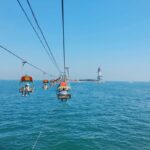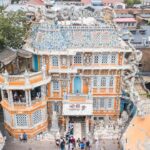Xiangxi! Xiangxi!
An ancient saying goes, “If Hunan possesses ten parts of beauty, Xiangxi alone claims nine.” This statement is not an exaggeration but carries profound meaning.
In the land of Hunan, beautiful landscapes are countless, but when it comes to the epitome of Hunan’s essence, Xiangxi undoubtedly takes the crown.
This ancient and mysterious land is like a poem, a painting, a dream, and a fantasy, captivating the heart and soul.
“Only Chu has talents, and they flourish here.”
Xiangxi, a land nurtured by nature, has given birth to numerous talents. Its deep cultural heritage and unique charm are the pride of Hunan.
In this vast land, ecology and culture intertwine, while tourism and scenic beauty complement each other.
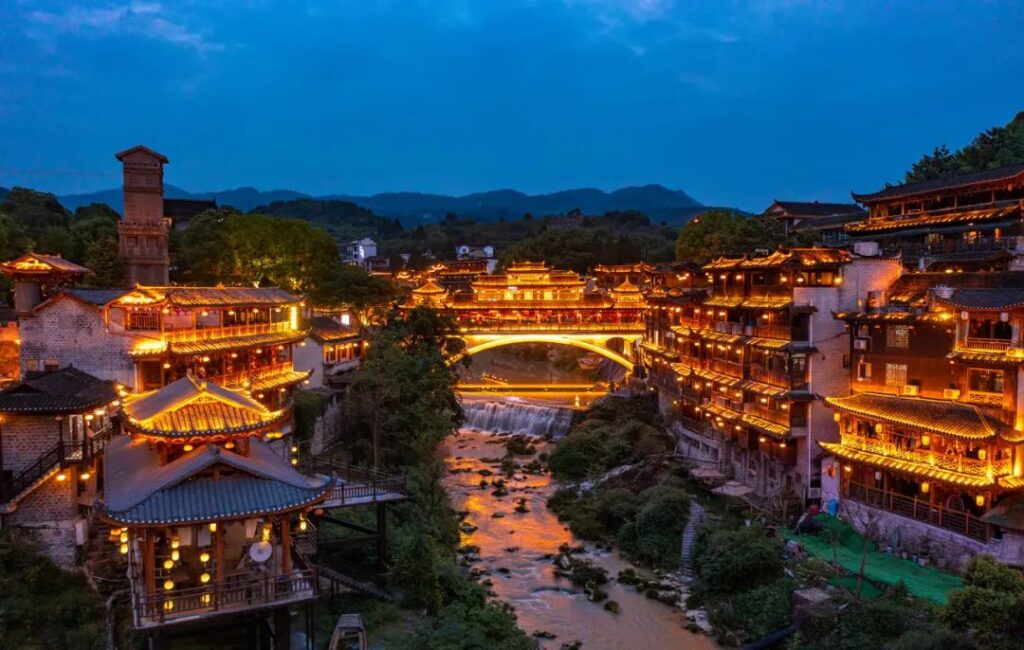
More than 320 “national-level” ecological and cultural tourism brands shine brilliantly, and 37 national 3A-level or above tourist attractions are scattered like gleaming pearls, dazzling the eyes.
Xiangxi, whether in the long river of history or in the scroll of scenic wonders, is a magical and enchanting place.
It carries thousands of years of history and culture, telling ancient and touching legends and stories.
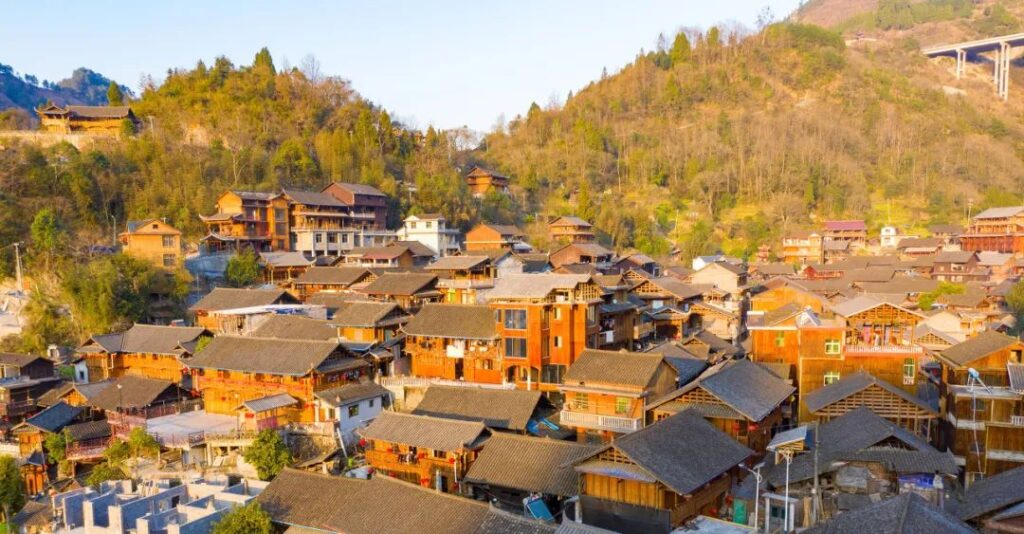
From the majestic mountains, clear streams, ancient villages, to the rich folk customs, everything makes people linger and indulge in its charm.
Stepping into Xiangxi is like entering a dream full of charm and stories.
Every mountain, every river, every grass, and every tree exudes a unique allure that captivates people.
The beauty of Xiangxi lies not only in its natural scenery but also in its profound cultural heritage and humanistic sentiments.
Therefore, if asked where the most beautiful place in Hunan is, Xiangxi is undoubtedly the top choice.
With its unique charm, it attracts countless tourists to visit, taste, and linger.
Here, people can feel the charm and style of Hunan and appreciate the magic and allure of Xiangxi.
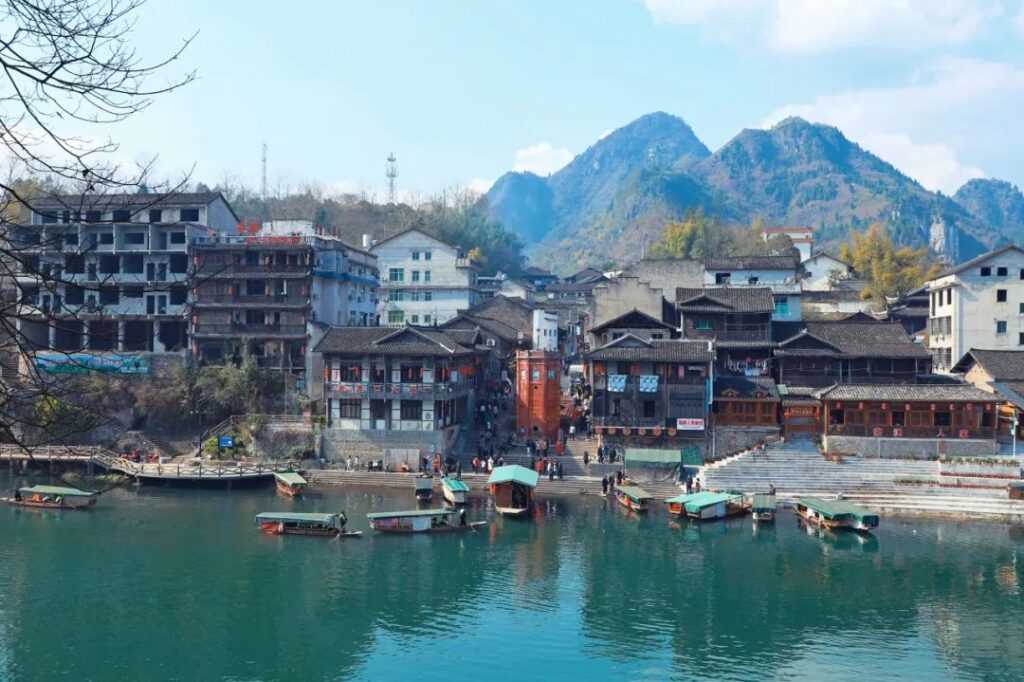
Where is Xiangxi?
Xiangxi is a visualized scroll of the life that everyone yearns for in their heart.
That longing, once abstractly depicted, finds vivid and concrete expression in every inch of Xiangxi’s land.
The crew of the third season of “Life in Mountains and Seas” once set foot in this mysterious land, focusing their lenses on it.
The forest trails, fresh and natural, as if every ray of sunlight is filled with poetry; the tea mountains, lush and layered, like the green dress of the earth; and the ancient villages hidden in the mountains, even more secretive than the secrets themselves, without the noise of the world, only the chirping of insects and birds echoing in the valleys, weaving a hymn of nature.
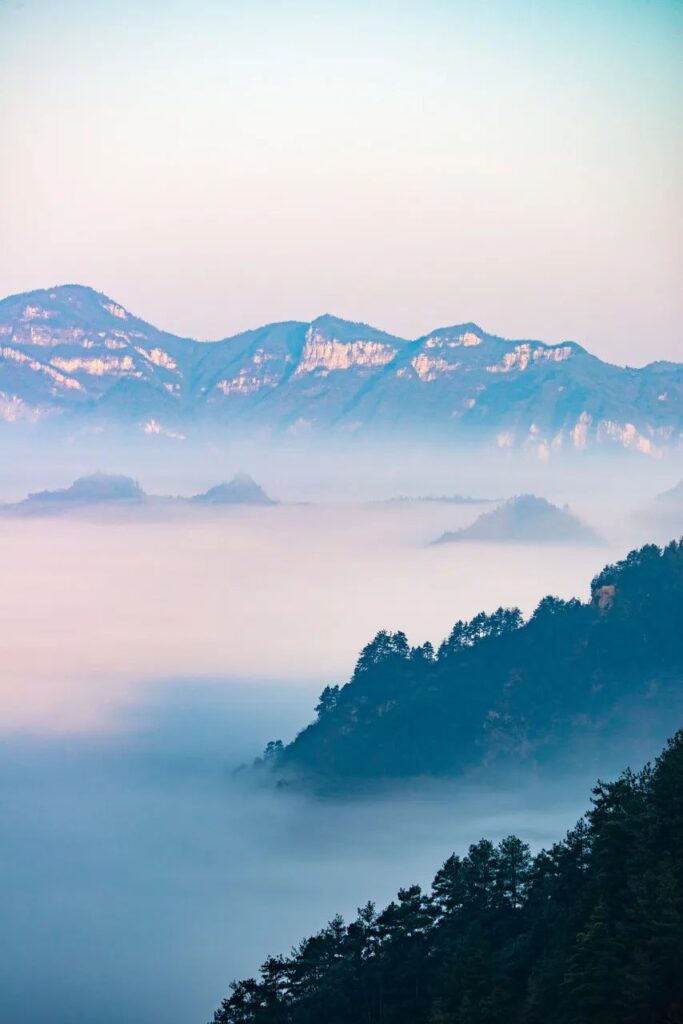
Here, it is so tranquil that you can almost hear the footsteps of time.
Even Huang Lei, who has traveled to countless places, couldn’t help but be moved, sighing that this is the life he truly yearns for deep in his heart.
Xiangxi is also the holy land of seclusion in everyone’s dreams.
In this fast-paced era, slowing down seems to have become a luxury.
However, more and more people are starting to yearn for living in the mountains and waters, seeking inner peace.
Seclusion, although seemingly ordinary, holds extraordinary meaning.
For many people, it is not only a longing in their hearts but also another interpretation of life.
The Tujia girl A Duo, who once shone on the screen, revealed her deep attachment to her hometown in a Weibo post in 2014.
She put down the prosperity of the city and returned to her roots – Xiangxi, where she began to experience the joy of planting flowers, watering, and loosening soil, feeling the power of life sprouting from the earth.

Xiangxi is also the mysterious land depicted in Shen Congwen’s writings.
With his delicate brushstrokes, he portrayed the streams of Cha Dong like a bow’s back, the mountain roads like a bow’s string, and the ancient city nestled between the mountains and rivers, like a flowing scroll.
Boats shuttle on the water, carrying the necessities of life and the dreams of people.
And that river street is a microcosm of life, half on land and half on water, with stilt houses scattered in an orderly manner, as if telling the long years of Xiangxi.
These seemingly simple words outline the most authentic and unfiltered appearance of Xiangxi.
It is like a cup of light tea that needs to be savored slowly to appreciate its charm.
Everyone sees a different Xiangxi, with endless charm and possibilities.
In the legendary story of Marshal He Long, it is a symbol of bravery and tenacity; in Huang Yongyu’s paintings, it is the perfect combination of art and nature; in Song Zuying’s songs, it is the blend of melody and deep affection; and in the rich and mellow aroma of Jiugui Liquor, it is the precipitation of history and culture.
So, what exactly is Xiangxi?
Perhaps, we cannot find a definitive answer from others.
Because Xiangxi resides in everyone’s heart, waiting for us to discover, to comprehend, and to love.
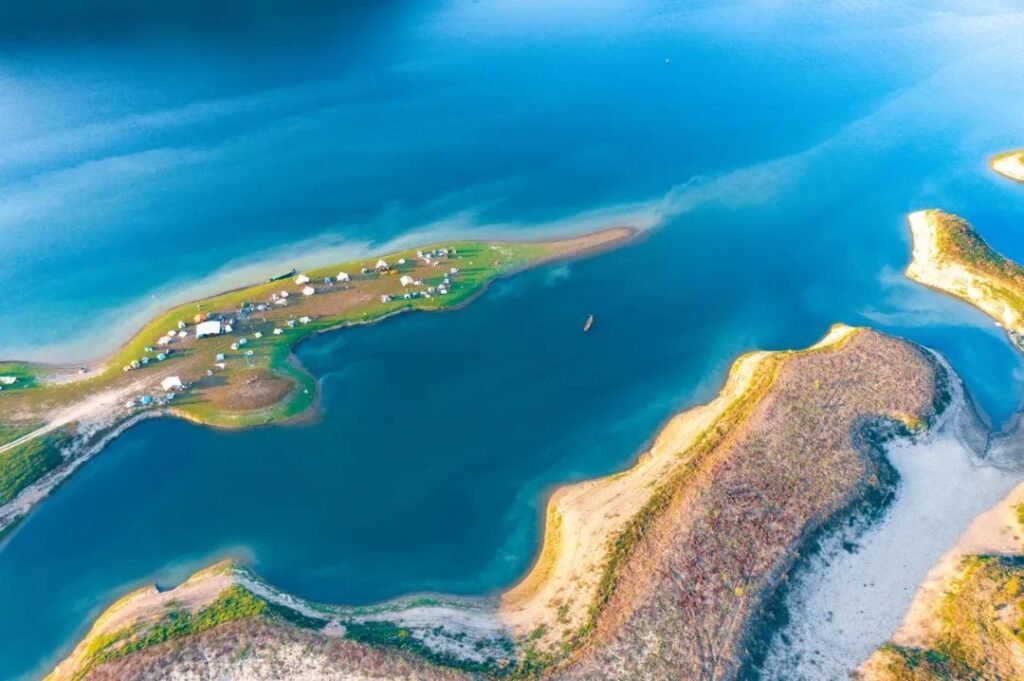
Fenghuang Ancient Town
Countless tourists set foot in Fenghuang, all because they are enchanted by the world depicted in Shen Congwen’s writings.
The ancient town in his pen is like a fairyland, untainted by the worldly desires, reciting poetry in a gentle tone, not flamboyant or unrestrained, but expressing deep emotions in a soft voice.
Since then, this dreamlike place has become a touch of tenderness on the land of Hunan, forming a stark contrast with Hunan’s fiery temperament.
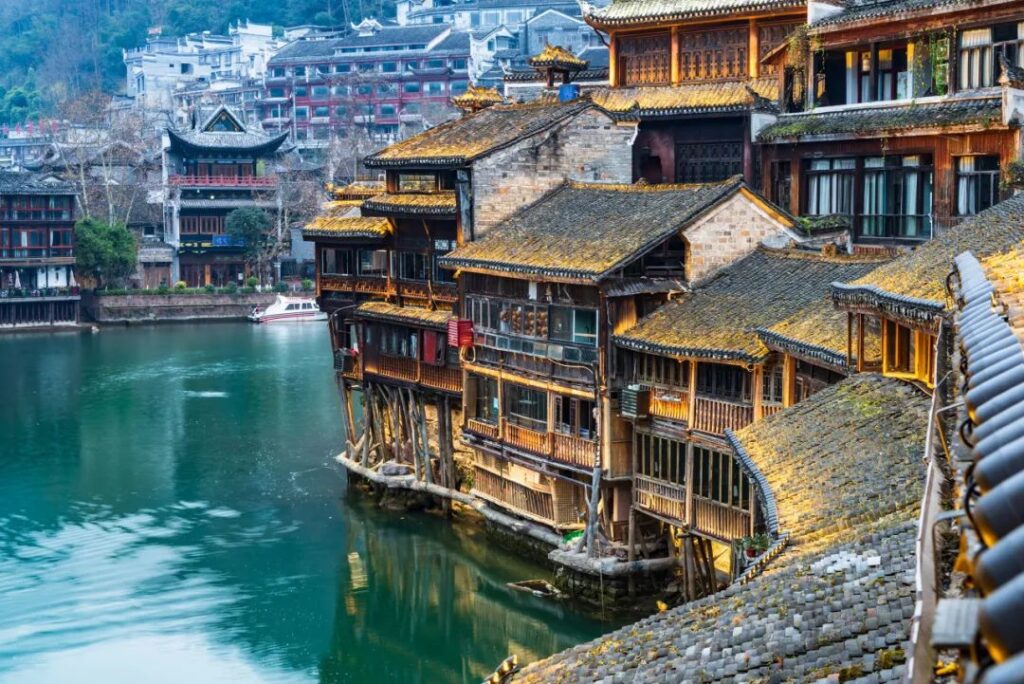
It has the touching love story of Nuo Song and Cuicui in “Border Town,” and also the prosperous Chang’an City in Mao Mao’s heart in “The Legend of Sword and Fairy 3.”
This land not only attracts the attention of domestic tourists but also fascinates foreign friends.
New Zealand writer Rewi Alley once praised with deep affection that Fenghuang is the most charming small town in China.
Fenghuang Ancient Town is built by the water and depends on it for its existence.
Because of this, the air in Fenghuang is often filled with a faint mist, intertwined with the light, like flowing time, making people intoxicated and dreamlike.
No wonder some people call Fenghuang a place with a fairy-like atmosphere and mysterious charm.
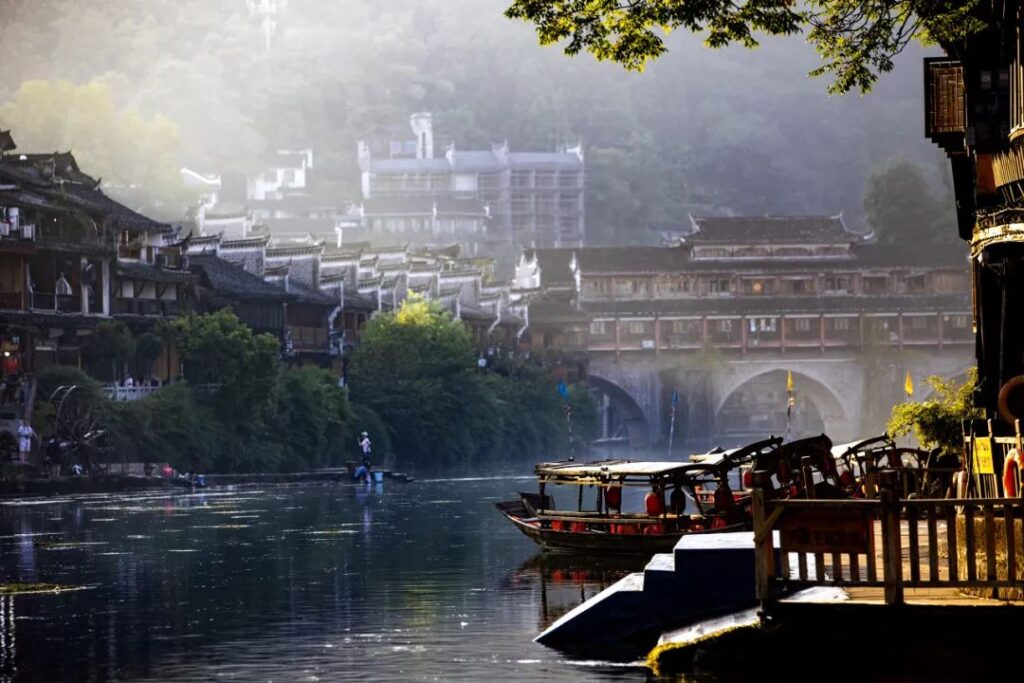
If asked where the most enchanting scenery in Fenghuang is, it is not an easy task, because the beauty of Fenghuang is complementary in every corner, together creating this fairyland.
In the morning, when the first rays of sunlight fall on the stilted houses by the river, they seem to be dressed in golden clothes, shining brightly.
On the river surface, small boats gently glide by, creating ripples, and the ancient town quietly awakens in people’s dreams.
The Tuojiang River, the mother river of Fenghuang, quietly nestles against the city walls, nourishing the children of the ancient town for generations.
Taking a black-awning boat, listening to the boatman’s melodious songs, and drifting downstream, one passes through the Rainbow Bridge, and the famous sites such as Wanshou Palace, Wanming Pagoda, and Duocui Building come into view. The Tujia stilted houses on both banks have withstood the vicissitudes of a hundred years and still stand tall, giving people a sense of tranquility away from the hustle and bustle, as if returning to the water towns of Jiangnan.

Tiao Yan, as one of the important passageways in and out of Fenghuang Ancient Town, not only connects the two banks but also becomes a unique landscape of Fenghuang.
In the early morning, Miao girls carry their laundry baskets and lightly step on the Tiao Yan to cross the river and do laundry. Their laughter and splashing water intertwine, forming a beautiful painting.
The Rainbow Bridge spans the Tuojiang River and is the iconic building of Fenghuang Ancient Town.
It is like a overlapping landscape line, traversing ancient and modern times, witnessing the vicissitudes of Fenghuang.
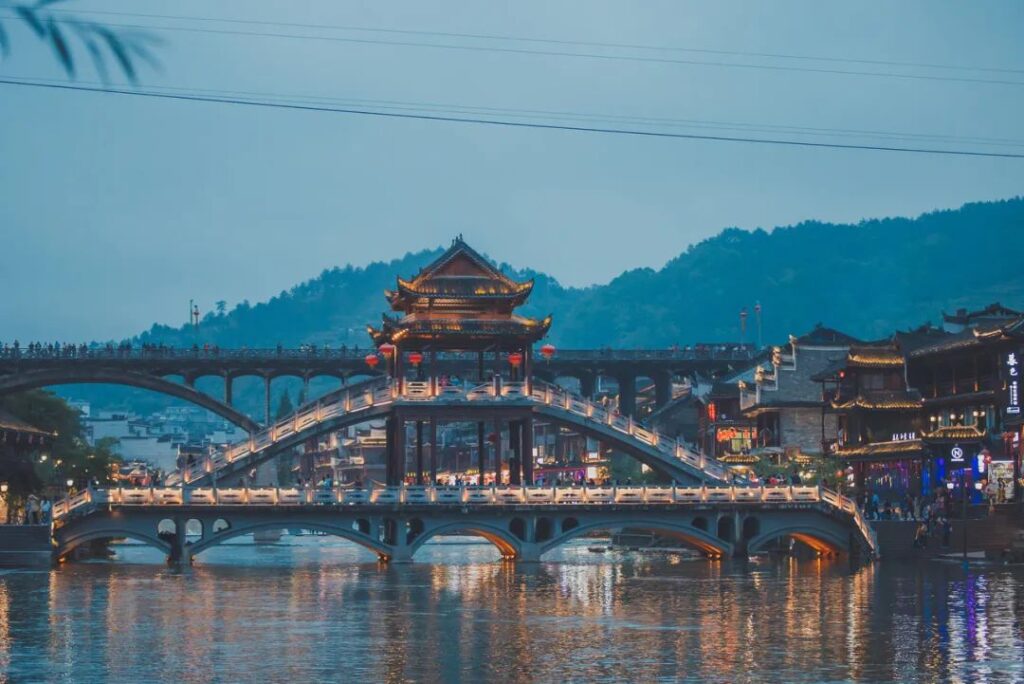
If you want to follow in the footsteps of Shen Congwen, you might as well visit his former residence to explore.
Here, you can feel the master’s fleeting years and taste the Fenghuang charm in his writings.
In front of the former residence, young tourists often crowd around the book counter, eagerly purchasing Shen Congwen’s works, hoping to appreciate the charm of Fenghuang from them.
When night falls, red lanterns and dazzling lights shine together, adding a touch of mystery and charm to the beautiful Fenghuang Ancient Town.
Unlike the night scenes of Lijiang and Yangshuo, Fenghuang Ancient Town nestles by the quiet Tuojiang River, and the reflection of the river makes the town’s colorful lights even more dreamy and illusory.
A day in Fenghuang seems to pass in an instant, making people want to stay for a few days and savor the charm and style of this fairyland.
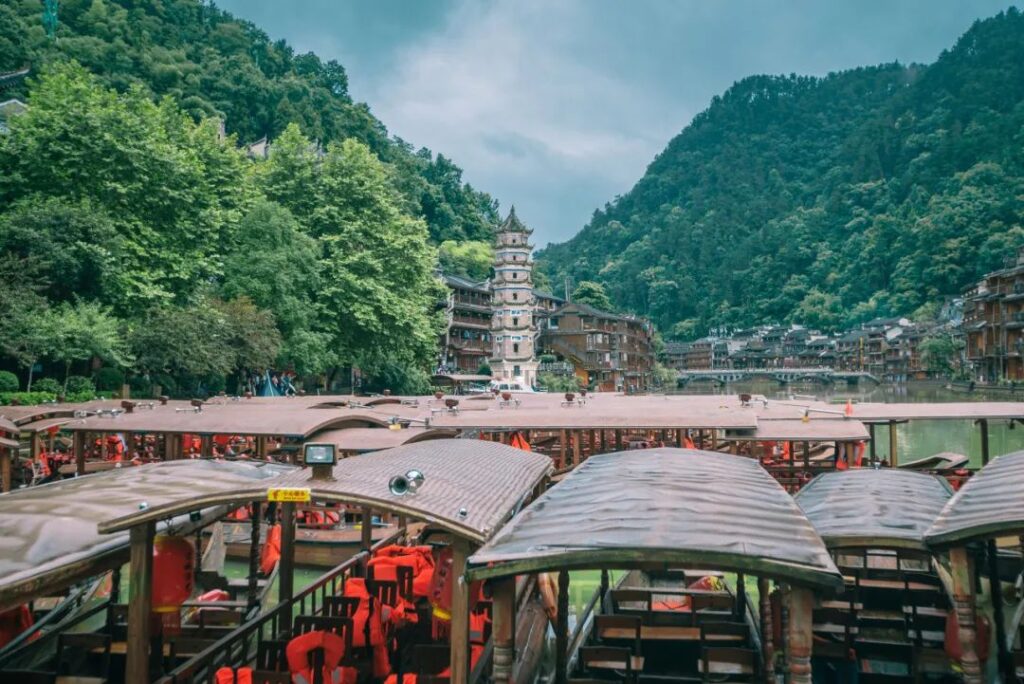
Furong Town
I discovered earlier that the names of the ancient towns in western Hunan are all poetic and picturesque, with a long-lasting charm.
Previously, there was the gracefully dancing phoenix, and later, the elegant and charming lotus.
However, the Furong Town we see today was once called Wang Village.
Later, because the movie “Furong Town” was filmed here, it was renamed Furong, like a blooming flower, attracting the eyes of countless tourists.
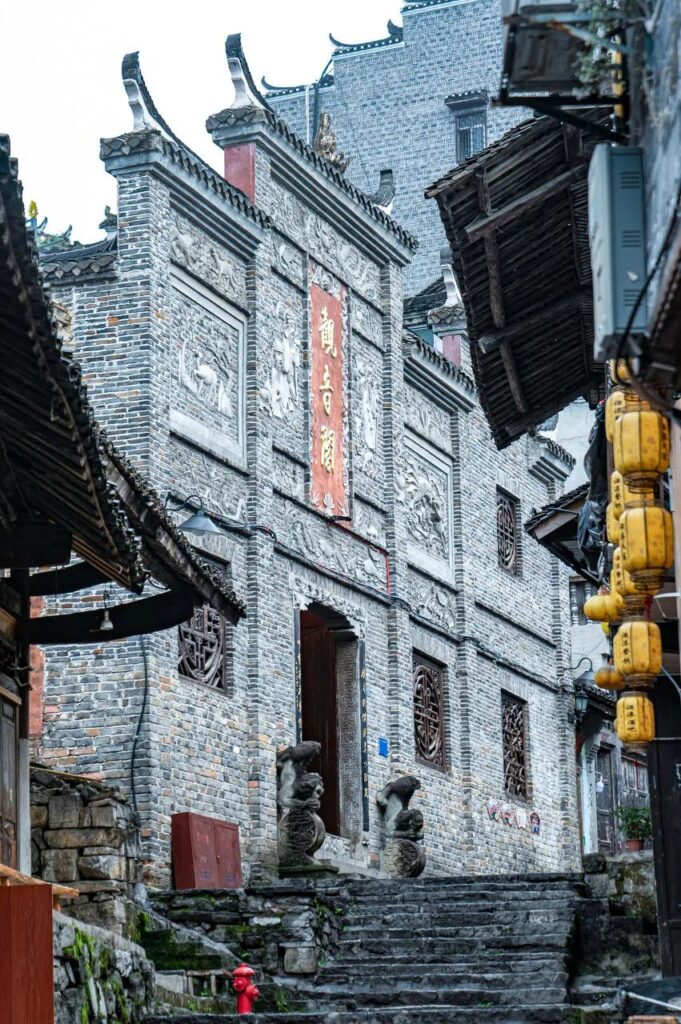
Although both belong to the ancient villages of western Hunan, the styles of Furong Town and Fenghuang are vastly different.
Fenghuang is like a tranquil beauty, while Furong Town is like an energetic young girl.
Furong Town has an advertisement slogan that is quite vivid: “A thousand-year-old town hanging on a waterfall.”
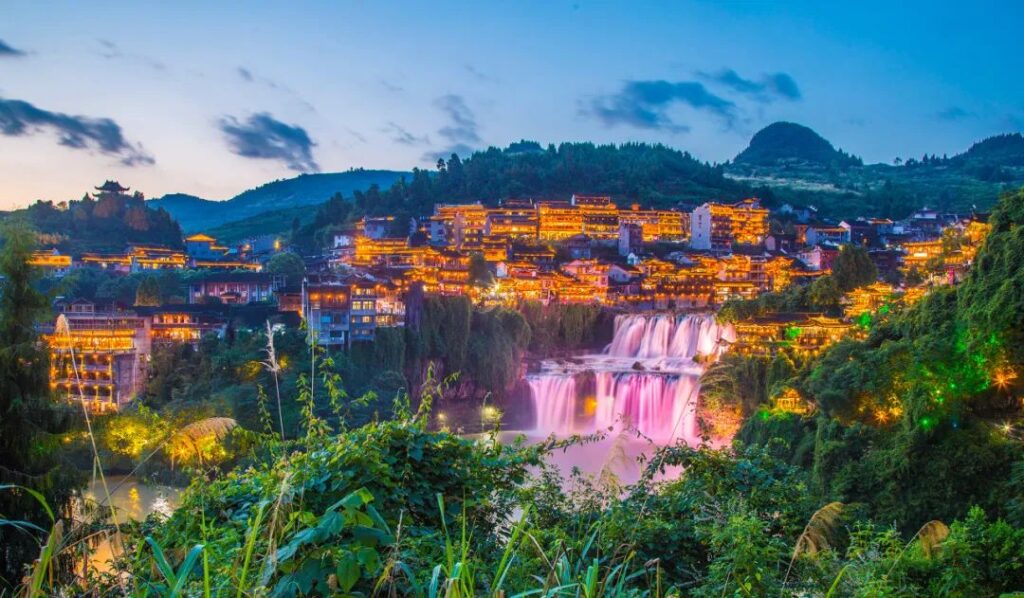
Above the waterfall, on the cliff top, the layered stilted houses rise into the clouds, hanging on the top of the waterfall, creating a unique cave heaven with distinctive features.
Waterfalls, clear water, green trees, green mountains, blue sky, white clouds, stilted houses…
These beautiful elements intertwine to construct the beautiful Furong Town of today.
However, the magnificent appearance can only allow us to appreciate the beauty of the ancient Peach Blossom Land. To truly taste the charm of Furong Town, we need to go deep into the ancient town.
Step on the bluestone slabs of the “Five-Mile Long Street,” stroll to the street corner, and visit the free folk customs museum.
The museum displays the precious historical relics of the Tujia people, the Xizhou Bronze Pillar, allowing people to feel the deep historical heritage of this land.
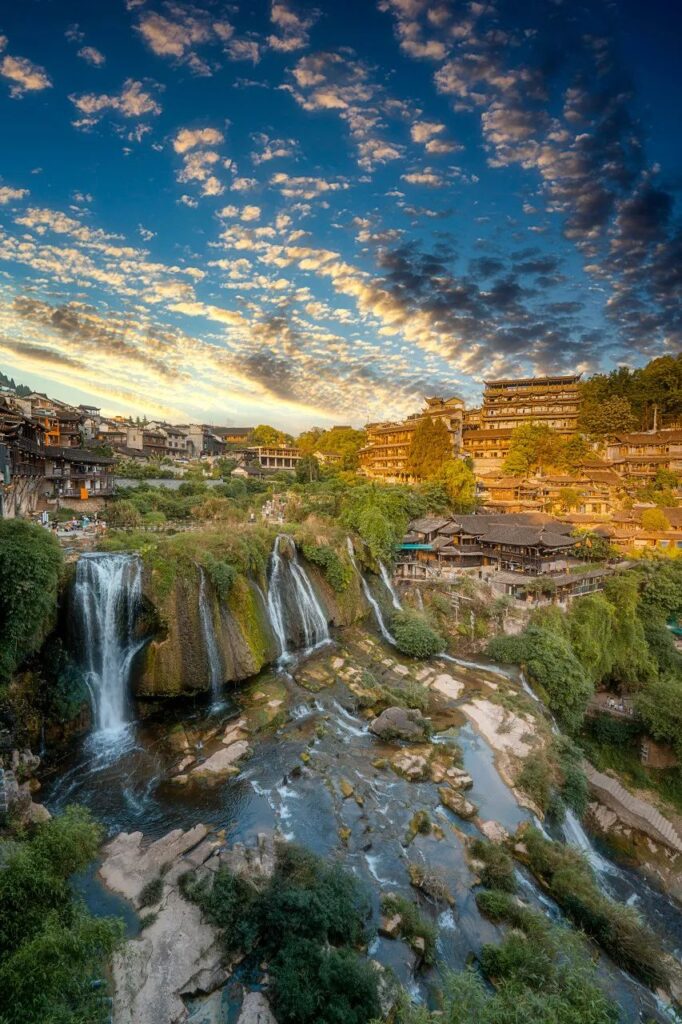
Pass through the Water Curtain Cave, visit the Ming and Qing architecture Youyang Palace, as if traveling through time and space, retracing the scenes from the movie “Furong Town.”
Also, try the rice tofu that Liu Xiaoqing sold back then, adding a unique flavor.
Compared to some well-known ancient towns, Furong Town seems a bit low-key.
It seems to still have a feeling of not being fully prepared, and some alleys don’t even have street lights.
However, it is precisely this sense of being in a different world that makes Furong Town particularly rare among the many ancient towns.
It is like an unpolished gem, waiting for us to discover its unique charm.
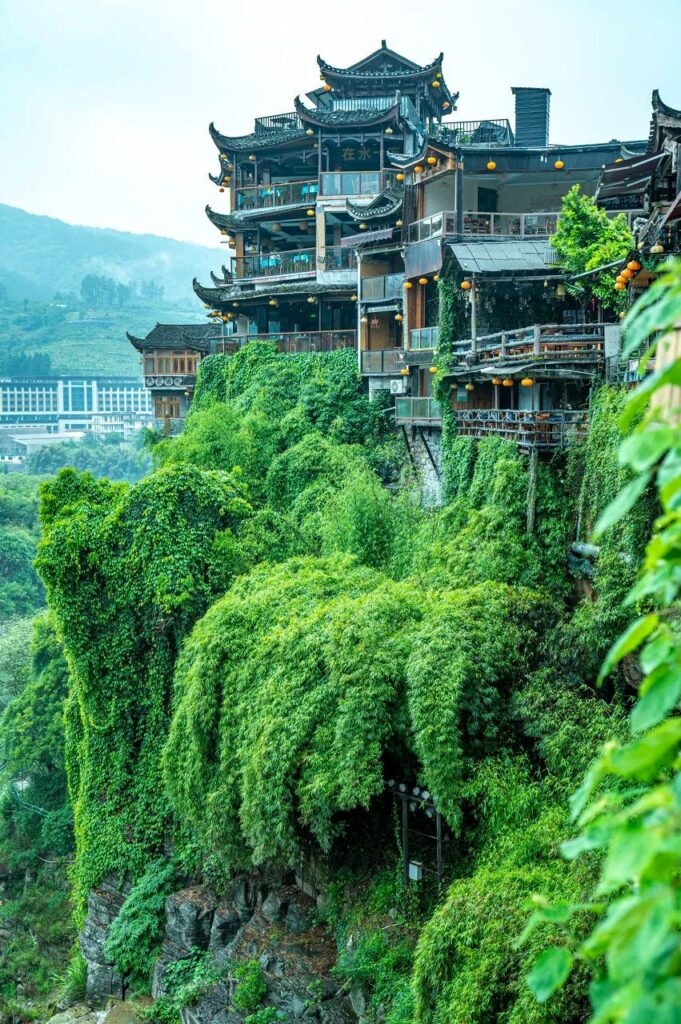
Qianyang Ancient Town
Qianyang Ancient Town, although its name is little known, contains thousands of years of vicissitudes and stories.
It is a brilliant and magnificent gem of ancient towns in the Ming and Qing dynasties, blossoming 1,400 years earlier than Lijiang Dayan Ancient Town and shining 900 years before Fenghuang Ancient Town.
This seemingly unknown ancient town actually carries the profound history and culture of western Hunan, and can be called the true “First Ancient Town of Western Hunan.”

The reason why I yearn for it and set foot on the stone-paved road of Qianyang Ancient Town is not only because of its long history but more because of the poetic sentiments in Wang Changling’s writing, “A piece of icy heart in a jade pot,” which is enough to make people miss it in their dreams.
It is low-key and introverted, silent and deep, like a secluded secret realm, waiting for destined people to explore.
Here, there is no bustle and prosperity of other ancient towns, only a rare tranquility and serenity.
It is not like those ancient towns with heavy traffic and crowded people. Qianyang Ancient Town is more like a secluded sage, living in seclusion and enjoying peace alone.
With less commercial atmosphere of famous ancient towns and more tranquility and simplicity unique to small towns, it makes people yearn for it.
Strolling in the streets and alleys of Qianyang Ancient Town, there are only a few tourists along the way, and most of the shop owners have their doors closed, as if the whole ancient town is leisurely enjoying this tranquility.

Occasionally, two or three elderly people can be seen sitting in front of their doors, leisurely and carefree. They quietly watch us outsiders, as if telling the stories of the ancient town.
Shuttling through this thousand-year-old town, I dare not make noise or walk quickly, for fear of disturbing this tranquility and beauty.
With each careful step, I fear missing any detail, any intimate encounter with this ancient city.
Here, I feel as if I have traveled through time, wandering with the ancients, conversing with history, and experiencing the unique charm of this ancient town.

Western Hunan, Reaching Out to the World
Aizhai Bridge
The Aizhai Bridge stands proudly between heaven and earth, winning the crown of four world firsts.
It is truly astonishing, the charm of China’s infrastructure, the leader of the world.
In the depths of the Dejiang Grand Canyon, a magnificent and spectacular super suspension bridge emerges, like a steel giant dragon winding and coiling at the top of the canyon, soaring across the sky with an overwhelming momentum.
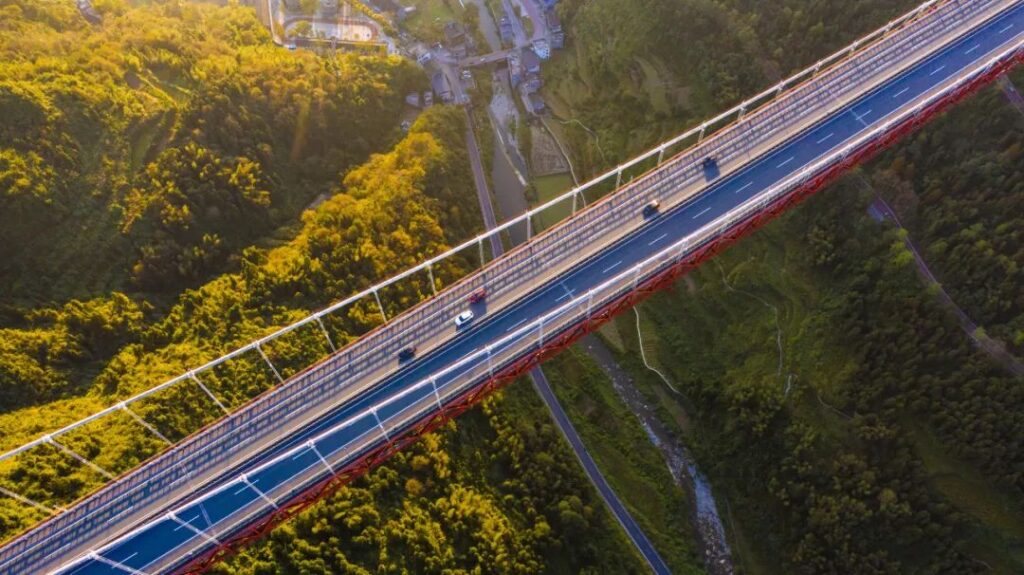
This bridge is extraordinary, directly garnering the honor of four world firsts.
With a main span of 1,176 meters, the design of the suspension bridge spanning the canyon is arguably the world’s best;
It is the first to adopt an innovative structure of completely separating the tower and beam, once again refreshing the world record;
The use of the “rail cable sliding method” to install steel trusses is also a world first in its exquisite technology;
Furthermore, it is the first to adopt a rock anchor cable structure and use carbon fiber as the prestressed tendon material, with technology so advanced it is unparalleled in the world.
The magnificence of this bridge cannot be described in words; only by being there in person can one appreciate its grandeur and wonder.

Guzhang Red Stone Forest
The Guzhang Red Stone Forest, the world’s only red carbonate rock stone forest scenic area formed during the Cambrian period, is a masterpiece of nature and a witness to the passage of time.
Thinking back to 500 million years ago, this place was once a vast and magnificent ocean, with surging waves and boundless expanse.
With the passage of time, although the blue waves have vanished, countless traces of the years have been left on the stone forest, testifying to the vicissitudes of the earth’s history.
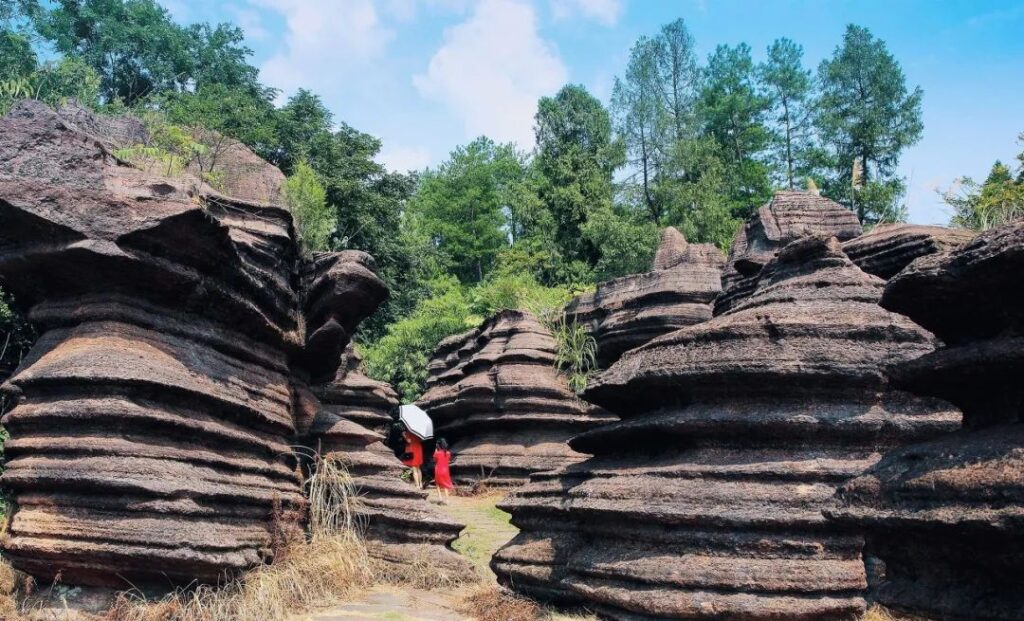
Today’s Red Stone Forest is surrounded by lush trees, verdant and vibrant.
The shapes of the stone forest vary, some like flowing ribbons, some like blooming flowers, some like frolicking animals, in a myriad of postures, vivid and lifelike.
Strolling among them, it feels like being in a fantastical world, making one marvel at nature’s supernatural workmanship.
Shuttling through this bizarre stone forest, one cannot help but feel awe for the magical charm of nature and respect for the tenacity and resilience of life.
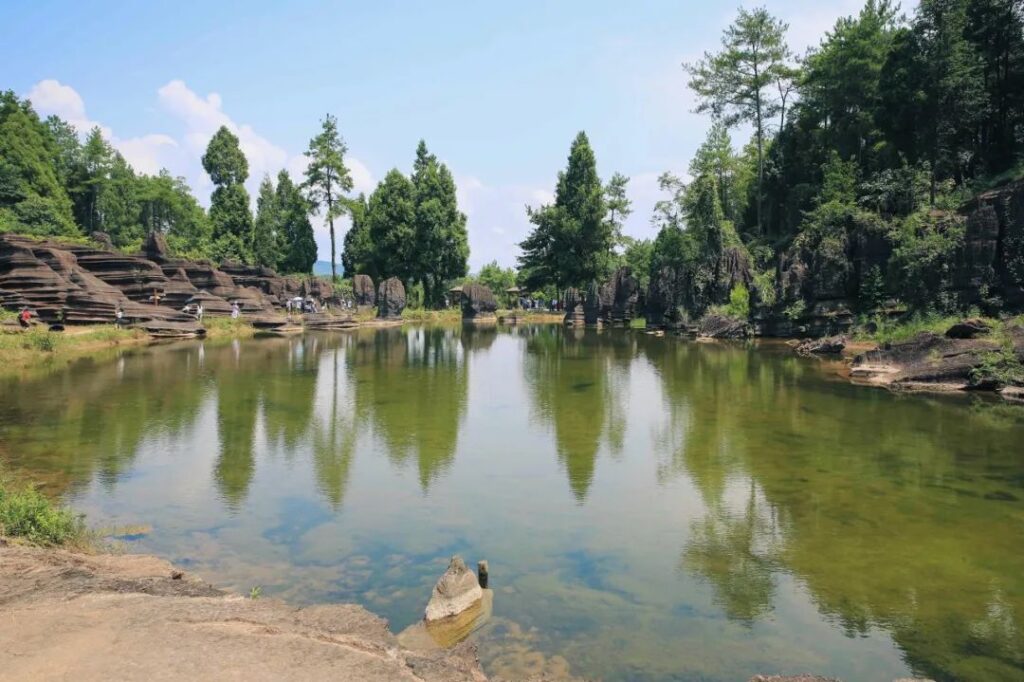
The Flavors of Western Hunan
When it comes to the flavors of Western Hunan, one cannot avoid the two characters “spicy” and “smoked.”
Spicy is the beloved taste of the Hunan people, straightforward and without any pretense, pure and passionate in its spiciness.
The rice tofu stir-fried with chopped chili peppers seems to have stolen the soul of the rice, making it irresistible, and a bowl of rice is devoured in an instant.
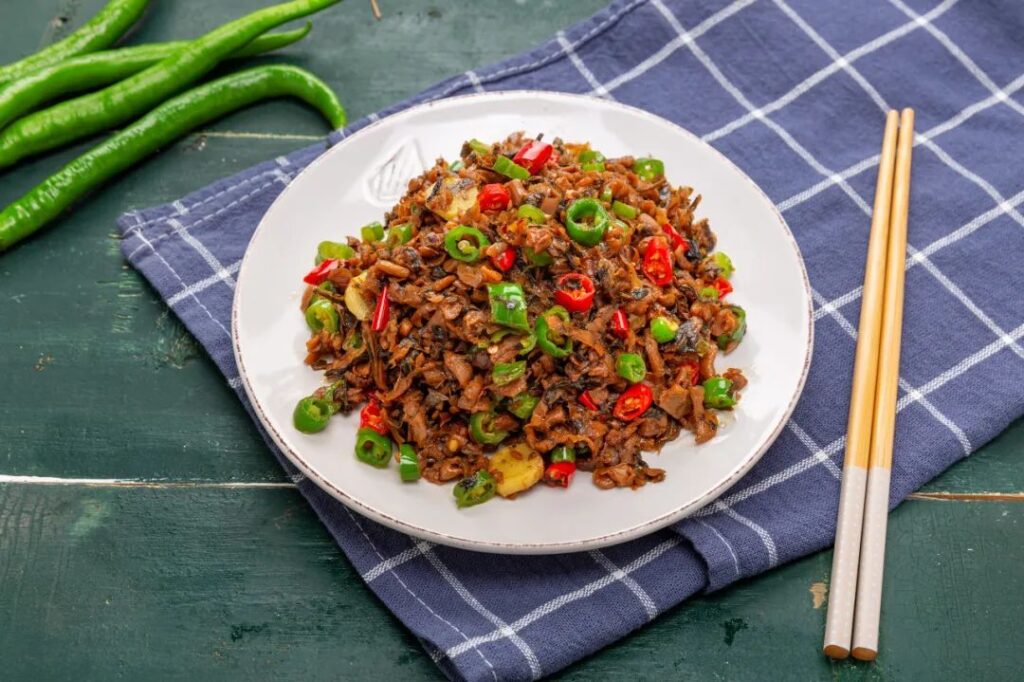
Strolling through the streets and alleys of Western Hunan, one can see the scene of cured meats hanging from doorways everywhere, a testament to the locals’ love for this smoky flavor.
The cured meat, after a long period of smoking, turns yellow and red, hanging at the air vent, becoming darker and shinier after a year or so.
When eaten, gently scrape off the outer layer of oil, slice thinly and stir-fry over high heat, or slowly steam over a fire. The texture melts in the mouth, fatty but not greasy, and the lingering smoky flavor in the mouth after swallowing makes one feel as if in the mountains and forests of Western Hunan, experiencing the gift of nature.

In addition to these mainstream flavors, Western Hunan also hides many specialty delicacies.
For example, blood tofu duck is a specialty dish of Fenghuang Ancient Town.
The duck meat is fresh and delicious, and the blood tofu is carefully made from duck blood and glutinous rice, with a texture similar to glutinous rice cake. Stewed together with the duck meat, it is soft, tender, and delicious, leaving an unforgettable aftertaste.
However, compared to the flavorful blood tofu, the duck meat seems slightly inferior.
The steaming hot mugwort rice cakes on the street can be called the representative dessert of Western Hunan.
The fragrance of the mugwort leaves has deeply penetrated the glutinous rice, and with one bite, it is chewy but not sticky, sweet but not cloying, making one indulge in it.
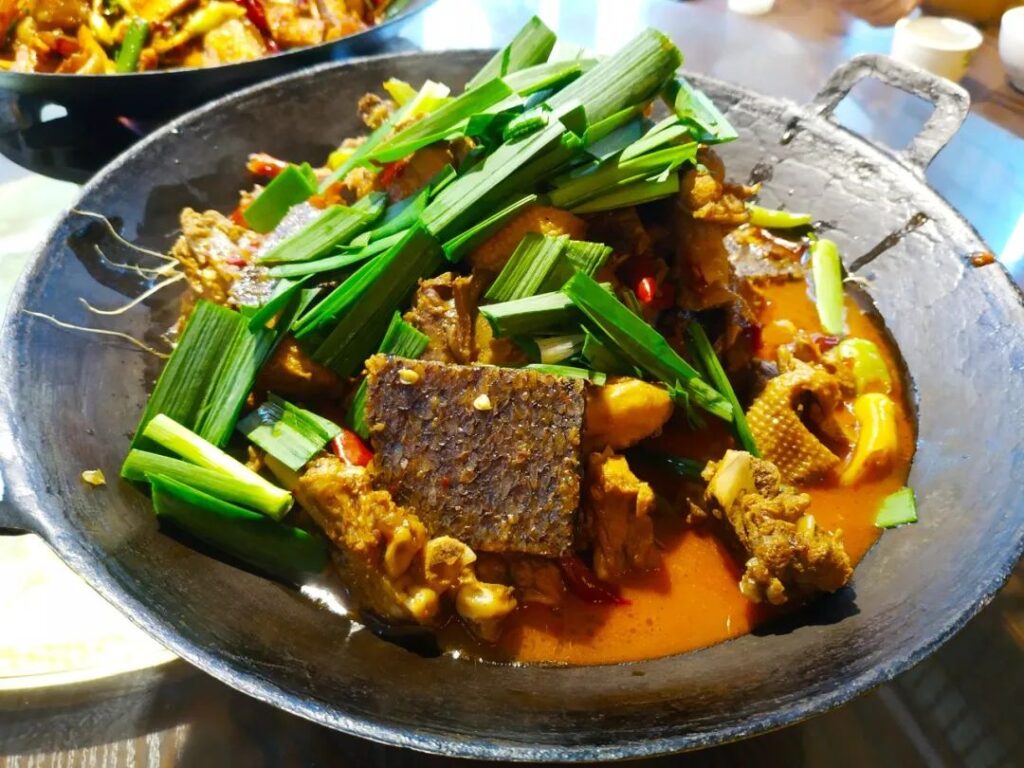
Entering Western Hunan is like entering a world that is easy to satisfy.
The characteristic ancient villages, the Tujia people’s fragrant cakes, the oil tea handed by the Miao girls, and the handmade crafts woven by the local grandmothers on the street, all make people fond of them.
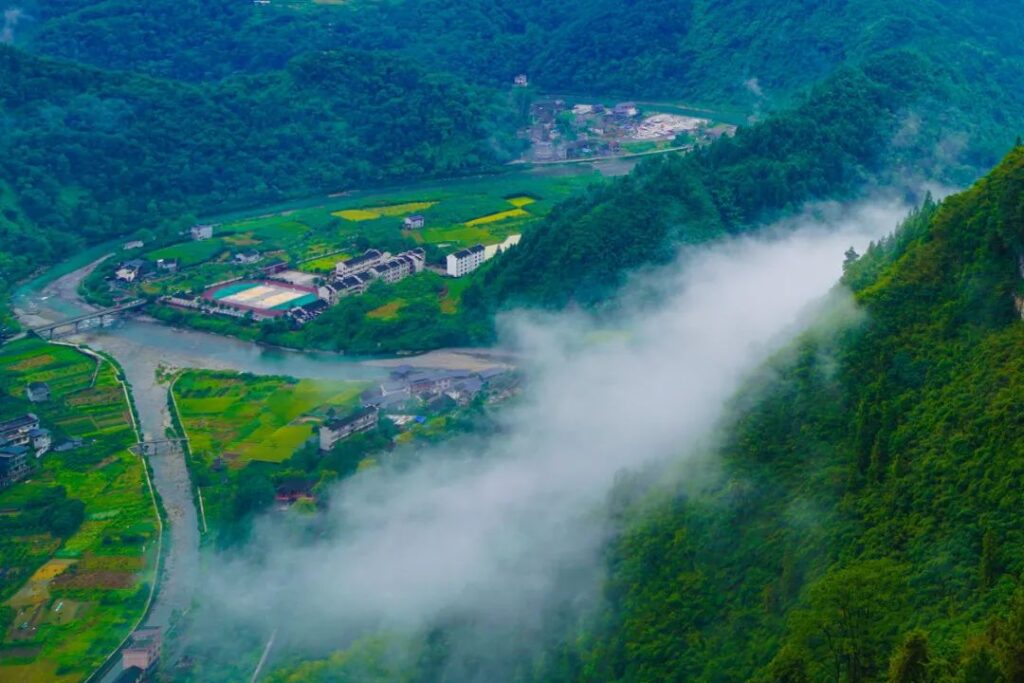
There are no bustling crowds here, no disturbing and noisy sounds, only its original tranquility and ease.
The woman walking by the arched bridge, slowly passing through and entering the endless green brick alleys, turns the ancient town into a hazy long poem.
Simple, quiet, unique, this is Western Hunan, a place where you don’t want to leave once you arrive.
Here, we can put down the noise of prosperity and find inner peace and satisfaction. So, what exactly is Western Hunan?
Perhaps we cannot get a definite answer from others.
Because Western Hunan is in everyone’s heart, waiting for us to discover, to comprehend, to love.
